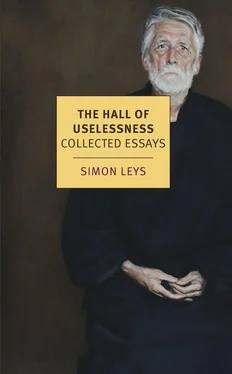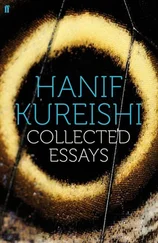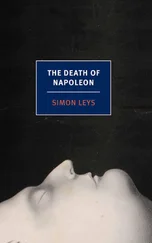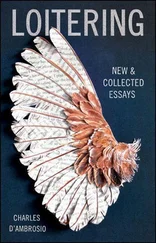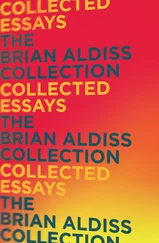When Saint Augustine first met Saint Ambrose, he was amazed by the exceptional ability the latter had to read silently: when reading, his lips did not move and the written message would pass directly from the book to his mind, without the intermediary of sound. This talent was still so rare at the time that Augustine felt moved later on to make a special note of it, betraying his own puzzlement:[2] such was the empire of the spoken word in Western culture at the dawn of the Christian era. The first sentence of Saint John’s Gospel, “In the beginning was the Word,” summed up the inheritance of antiquity and defined a continuing reality at the heart of our cultural world. One could neatly propose a parallel definition for the civilisation of China by formulating the reverse statement: In the beginning was the Script .
The earliest examples of the Chinese script — which mark the beginning of known historical records in China — date back to some 3,700 years ago. (As the graphic style of this writing appears sophisticated and mature, one must assume that it already had a long history; in the future, archaeology might well unearth evidence of earlier writing.) Even though written characters evolved considerably through the ages, modern Chinese writing can still be traced back, without interruption, to these early models: there is a direct continuity. This archaic script (“oracle bones inscriptions,” found on tortoise shells and shoulder blades of oxen, where they had been carved for divination procedures) was used to forecast the outcome of all major decisions of the state: harvest and hunting, war and peace. Hence, from the very beginning, script was intimately associated with the spirits and with political authority. These inscriptions did not record language, but meanings — directly, and speechlessly; they transcended language. One might compare them, in a way, to the symbolic or pictographic indications (increasingly complex and nuanced) that are now being used in international airports, where they provide directions without language, which every traveller understands at once, not within his own idiom, but beyond all idioms.
This Chinese emblematic meta-language developed independently from contemporary speech. For convenience, however, the written characters were progressively given conventional sounds; thus, eventually the inscriptions did not merely convey silent meanings, they could also be read aloud. In the end, they themselves generated a language — monosyllabic and non-inflected (features that remain as the special marks of its artificial origin) — and since this language carried all the prestige of magic and power, it gradually supplanted the vernacular originally spoken. Needless to say, this schematic description of the birth of the Chinese language as we know it today is simplistic and partly hypothetical; what seems certain, nevertheless — and of essential importance — is that, in Chinese, there was a unique anteriority of script over speech.
Boswell once suggested to Dr. Johnson that the Chinese were not barbarians and he invoked as evidence “the written characters of their language”:
Johnson : Sir, they have not an alphabet. They have not been able to form what all other nations have formed.
Boswell : There is more learning in their language than in any other, from the immense number of their characters.
Johnson : It is only more difficult from its rudeness; as there is more labour in hewing down a tree with a stone than with an axe.[3]
It would be all too facile to dismiss Johnson’s observation on account of the prejudice it reflected. The unfortunate reality of the prejudice does not invalidate the accuracy of the observation, once we divest it from its unnecessary value judgement. Whereas Boswell was admiring the shimmering sophistication of the surface manifestations of Chinese culture, Johnson correctly perceived the essential primitiveness that lay at its core: this combination of a donné of elementary and primeval simplicity with stupendous complexity and refinement in the actual applications and modalities at the superstructure level is a constant character of the Chinese genius.
Western technology, with its high efficiency but narrow specialisation and rigidity of function, is the product of a rupture: in order to conquer nature, Western man chose to cut himself off from it. Chinese civilisation, on the contrary, endeavoured to maintain the primordial unity; but the price of its uninterrupted communion with the world was a reduced capacity to control it; this, in turn, was compensated for with increased ingenuity, subtlety and elegance in the practical solutions devised to solve the various problems of human adaptation to material reality. In the Judeo-Christian culture, the original myth of conquest and disunion is Babel; the bold attempt at mastering the world ended in the accursed confusion of tongues — and from that point on, language was to separate people instead of bringing them together. China, on the contrary, continued to live in a pre-Babelian condition; as Billeter suggests, its script, which conveys meaning beyond language and transcends all differences of speech, links mankind to its earliest origins and proposes the very emblem of an essential unity.
* * *
In China, the original function of the written word — which possessed the demiurgic power of ordering the cosmos and of generating reality — never disappeared entirely, but it was progressively eclipsed by its aesthetic virtues. Calligraphy in the narrow sense of the word — i.e. writing considered as an artistic pursuit, as a means of self-expression, and an outlet for the calligrapher’s individual sensitivity — began to develop at the end of the Han period (third century AD). From that time on, it progressively turned into a specialised discipline, with its masters, theoreticians, critics, collectors and connoisseurs, and came to occupy the leading position among all the visual arts (with painting as its close second).
Calligraphy is executed in ink, on silk or paper, with a brush. (Even when carved into stone or wood, the carving endeavours to convey an illusion of brushwork.) The calligraphic brush is a typical product of Chinese ingenuity; once again, it marries deceptive simplicity of a structural principle with utter subtlety and versatility of its actual applications. The extreme sensitivity of this instrument has, for a corollary, its diabolic difficulty of handling. In order to master the brush (and not be led by it), the calligrapher has to achieve a high degree of mental concentration, physical balance and muscular control; long years of intensive training are required to reach a minimum level of competence. (The famous painter Chang Ta-ch’ien once paid a visit to Picasso and presented him with a superb Chinese brush. Picasso toyed with his new tool for the next few days; the awkward graphic mess he made of it is quite instructive.) The ink, far from being stable and monochrome, offers a wide range of nuances: its shine, its depth, its blackness, its pallor, its thickness, its fluidity, its dryness, its wetness echo every mood and inflection of the brush itself, the work of which can be slow or fast, rough or smooth, impetuous or subdued, naïve or cultured, violent or delicate. As a result, the textural quality of a work of Chinese calligraphy, its “fleshiness” or its “boniness,” has a sensual dimension which no reproduction can adequately convey.
The silk or paper used for calligraphy has an absorbent quality; the lightest touch of the brush, the slightest drop of ink, registers at once — irretrievably and indelibly. This is a medium that tolerates no error, no correction, no hesitation. The brush acts like a seismograph of the mind, answering every pressure, every turn of the wrist; the record of its course on the blank page is instantaneous, complete and final. The written characters are the only materials at the disposal of the calligrapher. Not only is he not allowed to create new graphic structures, but this limited material is itself strictly predetermined: each character must be written with a specific number of brushstrokes that are arranged in a precise pattern, and follow each other in preordained sequence. (In Billeter’s felicitous phrase, “Ultimately it is the fixed order of the strokes that makes calligraphy a visible music.”) There is therefore no latitude for initiative; or, rather, all the resources of invention and creation are exclusively channelled into expression.
Читать дальше
